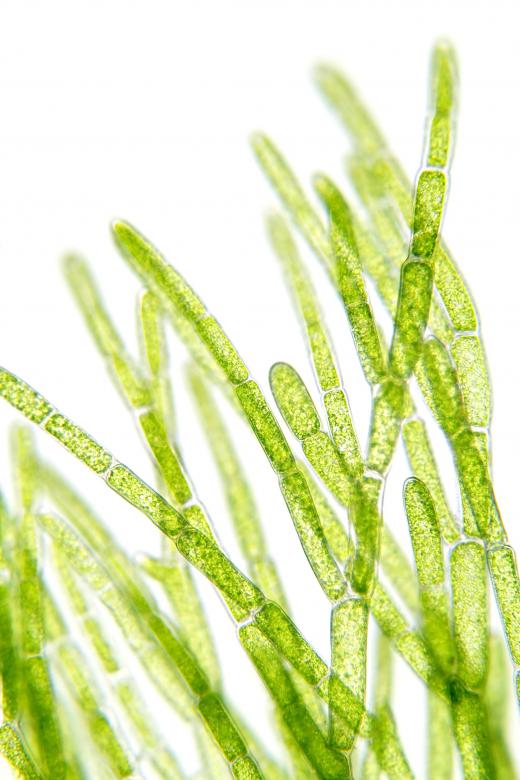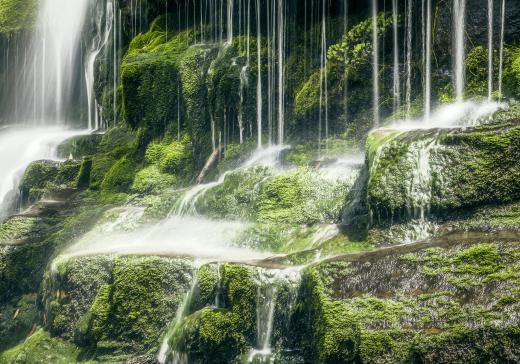What is the Evolutionary History of Plants?
 Michael Anissimov
Michael Anissimov
The evolutionary history of plants begins a very long time ago. Algae has probably existed on moist ground for over a billion years, but plants, as in the kingdom Plantae, did not emerge until 700 million years ago at the earliest. This number is from molecular genetics analysis that suggests land plants split from the green algae around this time, although this figure is not corroborated by fossil evidence. The earliest evolutionary history of plants on land appears in the early Ordovician period, about 475 million years ago, although many paleobotanists suspect there were plants during the Cambrian period, 500 million years ago.
The first land plants were non-vascular bryophytes, represented today by mosses, hornworts, and liverworts. These plants, lacking circulatory tissues, were quite short, between 1 and 100 mm (4 in) in thickness. These bryophytes represented the basal group in the evolutionary history of plants. They could only survive in very moist areas, where all cells can easily take in water directly, and their spores could be dispersed easily. Lacking a protective coating, spores are relatively fragile, and prone to dessication (drying out). Scientists believe that the first land plants may have set the stage for the colonization of the land by animals by sequestering carbon dioxide from the atmosphere in the biopolymer lignin. This increased the portion of the atmosphere containing oxygen, making it more available to oxygen-breathing animals like the first terrestrial arthropods and mollusks.

Around 425 million years ago, the first vascular plants appeared, like the simple bifurcating, sporangia (spore-producing structure) tipped Cooksonia and the unusually advanced Baragwanathia, found in Australia. Slowly, plants grew in height, from just a couple centimeters to around 20 centimeters (8 in). At this point, plants spread mainly through vegetative growth, as spores could not be dispersed very far from the parent plant. Scientists who study the evolutionary history of plants are hard at work trying to determine which land plant was actually the first and what its ecosystem looked like.

Throughout the Devonian (416 - 360 million years ago), plants progressively grew in height to become as large as today's massive ferns. At the start of the Devonian, plants were mostly non-vascular and correspondingly diminutive, but by the end of the period, seed-bearing plants had evolved, forming huge forests. The explosion of botanical diversity during this period has been called the "Devonian explosion." Meanwhile, fish ruled the seas.

The next major innovation in the evolutionary history of plants was much later, during the Cretaceous period, when flowering plants (angiosperms) first emerged. Using flowers to attract bees, which would then go on to pollinate other plants, angiosperms were genetically diverse and a great evolutionary success. One of the latest varieties of plants are the grasses, which evolved from the angiosperms just 35 million years ago.
AS FEATURED ON:
AS FEATURED ON:














Discussion Comments
The first plants were introduced during pre-cambrian time, cynobacteria.
Plants have evolved to adapt in nearly any environment, except for the furiously cold south and north poles. Even the tundra closer to the equator is an extremely cold environment, but houses low fauna and small trees. Trees grow on the sides of cliffs and prevent erosion, and plants everywhere are necessary to a clean and healthy environment. We are and always have been symbiotic with them, using the sun-power inherent in wood to build our houses and burn our fires to keep warm.
@GigaGold
Plants evolved from fungi and algae growing on the edge of lakes, and came to grow on land as animals came out of the water. The animal life likely predated plants per se, but came after fungi, from which plants came. Marine plants are unlike terrestrial plants, and are more like algae in form.
In order for herbivores to exist, there needed to be a plant base. Wouldn't this mean that plants necessarily came first before animals?
it's good.
Post your comments